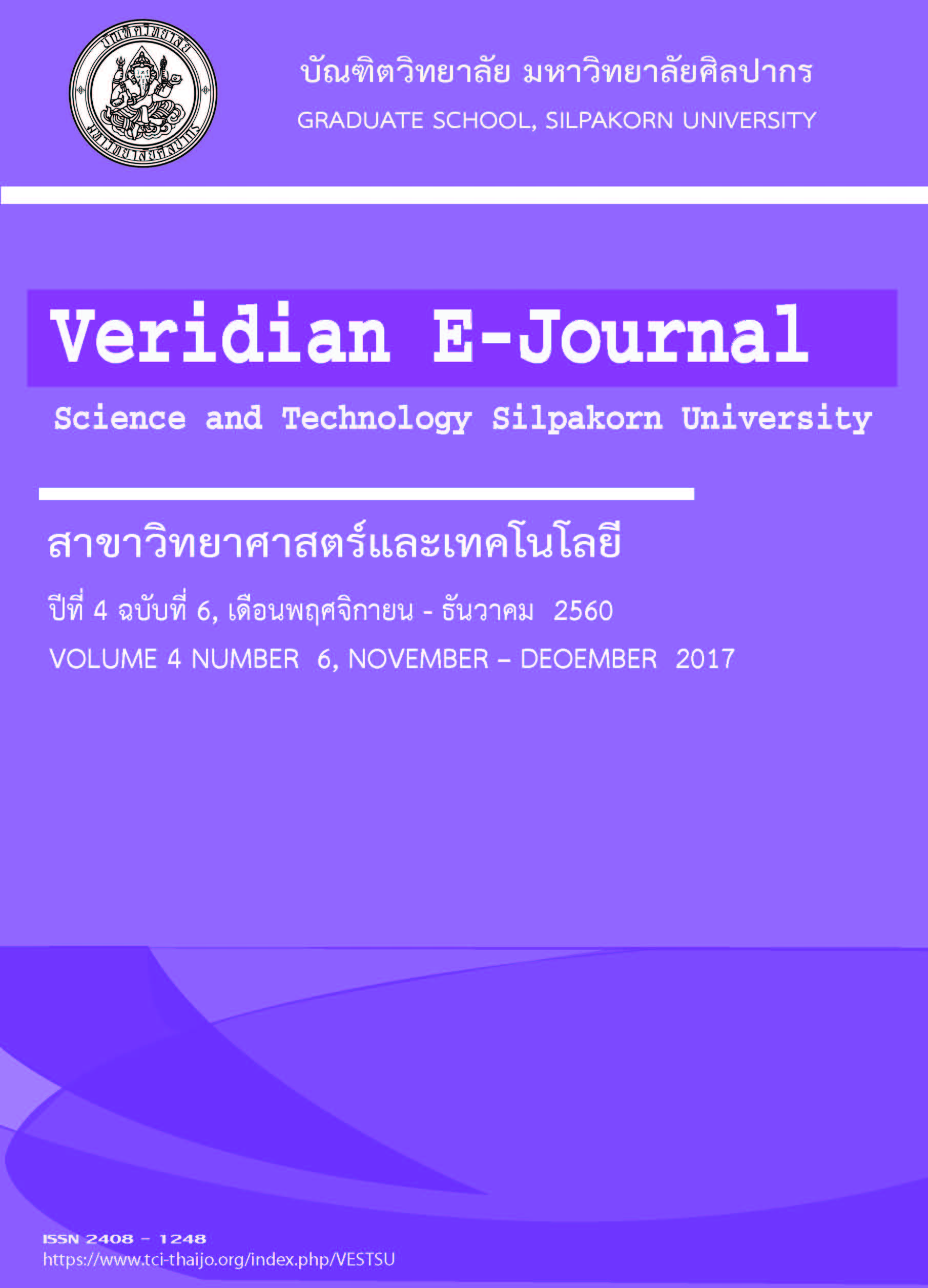การตรวจหารอยลายนิ้วมือแฝงบนวัตถุพื้นผิวเปียกไม่มีรูพรุนด้วย Small Particle Reagent โดยใช้นาโนซิงค์ออกไซด์ (Latent Fingerprints Development on Non-Porous Wet Surfaces Using Small Particle Reagent based on Nano-ZnO)
Main Article Content
Abstract
ลายนิ้วมือแฝงเป็นพยานหลักฐานชิ้นสำคัญในการตรวจพิสูจน์หลักฐานทางนิติวิทยาศาสตร์ มีรายงานวิธีการตรวจเก็บรอยลายนิ้วมือแฝงจำนวนมาก การใช้ Small particle reagent (SPR) เป็นอีกหนึ่งวิธีที่เร็วและง่ายสำหรับการตรวจหารอยลายนิ้วมือแฝงบนวัตถุพื้นผิวเปียกไม่มีรูพรุน ดังนั้นงานวิจัยนี้ได้ทำการพัฒนาชุดสารเคมี SPR จากสารเคมีที่สามารถหาซื้อได้ง่ายและไม่เป็นพิษสำหรับตรวจเก็บรอยลายนิ้วมือแฝง ชุดสารเคมี SPR ประกอบด้วยนาโนซิงค์ออกไซด์และสารลดแรงตึงผิว ได้แก่ Sodium lauryl sulfate (SLS), Polyquaternium-10 และ Tergitol NP-9 ที่ถูกเติมลงในแต่ละสูตร รอยลายนิ้วมือแฝงถูกประทับลงบนวัตถุพื้นผิวไม่มีรูพรุน 4 ชนิด ได้แก่ กระจก ประตูรถยนต์ (โลหะเคลือบสี) พลาสติก และช้อนสแตนเลส โดยพื้นผิวตัวอย่างถูกแช่ในน้ำประปาและน้ำจากแหล่งน้ำธรรมชาตินาน 1, 3, 7, 14 และ 30 วัน ก่อนการตรวจพิสูจน์ ผลการทดลองพบว่ารอยลายนิ้วมือแฝงที่ตรวจหาด้วยชุดสารเคมีที่ประกอบด้วยนาโนซิงค์ออกไซด์และ Tergitol NP-9 มีคุณภาพดีที่สุด โดยรอยลายนิ้วมือแฝงที่ตรวจพบบนพื้นผิวช้อนสแตนเลสมีคุณภาพดีกว่าพื้นผิวกระจก ประตูรถยนต์ และพลาสติก นอกจากนี้สามารถตรวจหารอยลายนิ้วมือแฝงได้ทั้งในตัวอย่างที่แช่ในน้ำประปาและแช่ในน้ำจากแหล่งน้ำธรรมชาติ จากผลการทดลองแสดงให้เห็นว่าชุดสารเคมี SPR ที่พัฒนาขึ้นสามารถใช้ตรวจหารอยลายนิ้วมือแฝงบนวัตถุพื้นผิวเปียกไม่มีรูพรุนได้
Fingerprints are considered valuable physical evidence in forensic investigation. Various methods have been reports for the development of latent fingerprints. The small particle reagent (SPR) is the fastest and easiest technique to develop latent fingerprints on non-porous and wet surfaces. Thus, this study reports the adaption of readily available andnon-toxic small particle reagent for the development of latent fingerprints. Nano-zinc oxide based small particle reagent was formulated and the surfactant namely, sodium lauryl sulfate (SLS), polyquaternium-10 and tergitol NP-9 were added in each formula. The latent fingerprints were deposited on four different non-porous surfaces, i.e. glass, car door (color-coated metal), plastic and stainless spoon. The specimens were immerged in tap water and natural water for 1, 3, 7, 14 and 30 days before the examination. It was found that the best quality of the developed latent fingerprints was obtained from the SPR formulae containing nano-zinc oxide and tergitol NP-9. The quality of the developed latent fingerprints obtained on stainless spoon was better than glass, car door and plastic. Moreover, the latent fingerprints can be detected in both specimens immersed in the tap water and in natural water. The results of this study have demonstrated that the homemade SPR can be used to develop latent fingerprints on non-porous wet surfaces.

